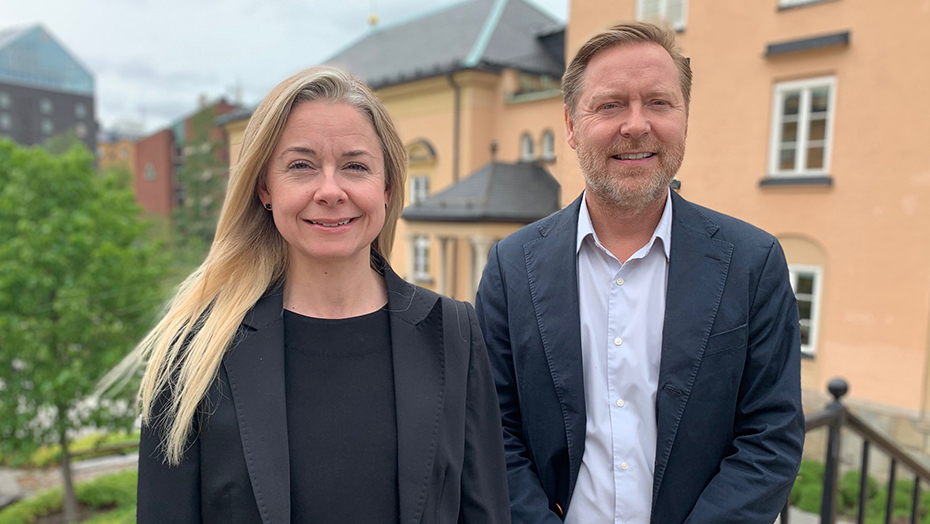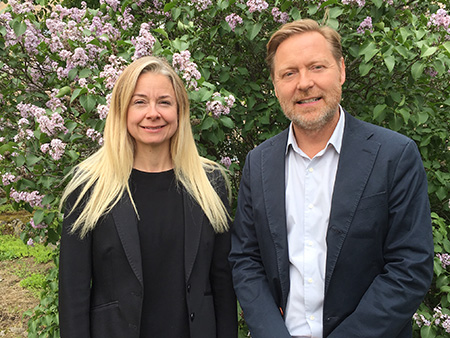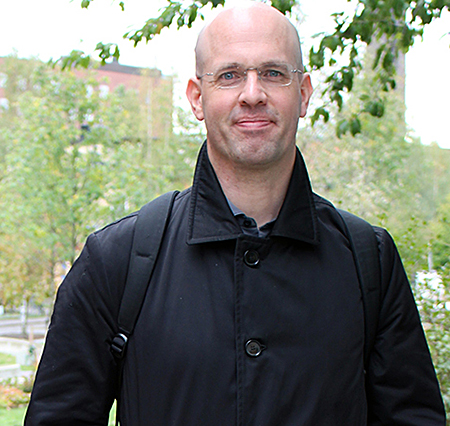
The Swedish Higher Education Authority comes knocking
This autumn, KTH is due to receive a visit from the Swedish Higher Education Authority (UKÄ) to audit and present comments on how well our system for quality assuring study programmes works. It is important for KTH to be well prepared to answer UKÄ's questions then.
“KTH ought to view this audit as support for the continued development of our QA system. We get valuable feedback and recommendations from a group of experts with broad and deep knowledge of quality-related issues.”
These are the words of Magnus Johansson and Inger Wikström Öbrand, both of whom are QA coordinators who work with the development of KTH's QA systems and provide central support to QA work at KTH.
As part of this QA work at KTH, we continuously assess the quality of our programmes to ensure they are as good as we would like them to be and that we are improving any parts that do not live up to our expectations. In addition to our own requirements at KTH, we also need to check and develop programmes such that they meet statutory and regulatory requirements. We are also required to ensure that our programmes are regularly audited by external and independent experts every six years.

“UKÄ will focus on ascertaining whether KTH’s QA systems are well thought through per se, and the extent to which KTH has processes and procedures that are fit for the purpose of quality assuring programmes,” Wikström Öbrand says.
Effective tools are key to helping KTH in the strategic and systematic development of its study programmes. The QA system is one such tool that enables KTH to determine the strengths of a study programme and areas for further development. This, in turn, means that our organisation can orient measures towards those parts of a programme where they are genuinely needed.
“Quality shortcomings are systematically discovered and actioned in an effective QA system. This is a sign that a QA system is working well,” Wikström Öbrand says.
Johansson adds:
“Some people may well perceive checks as having negative connotations, but in actual fact, it’s purely a case of having your finger on the pulse and therefore able to make wise decisions on which parts need to be addressed.”
The UKÄ audit of KTH
UKÄ will make two site visits to KTH. The first is scheduled for 1 October. During this visit, representatives of KTH’s management at all levels will be interviewed along with their equivalents from the students’ union. The audit group will then return for a longer visit from 25-28 November to meet employees at the schools.
KTH's self-assessments, the student dossier that THS has written plus the aforementioned interviews will form the supporting data for the audit, along with other data, such as the KTH annual report.
The student dossier is important as it a self-assessment based on the students’ perspective. It describes how student input in all QA processes at KTH works.
QA work within a school

Gunnar Tibert, Director of First and Second Cycle Education at the School of Engineering Sciences (SCI), has been involved in QA work, including as a member of the steering group for self-assessment.
“If an employee feels that the system for quality assurance is not effective, there is a risk that they then won’t engage in quality assurance work,” says Tibert.
Major Events and Prioritised Educational Issue (PriU) Groups, where prioritised educational issues are discussed, are good forums for quality improvements. He feels everyone, both teachers and students, can engage in and contribute to the further development of education.
“Education areas are complex and span several fields. We must work as “One KTH”, and do more together and prioritise. The external auditors will then be able to see that all the schools work in pretty much similar ways. We need to be able to present evidence to UKÄ that our quality assurance work is both efficient and effective,” Tibert explains.
However, he is aware that measuring quality is not entirely a straightforward task, as there are numerous parameters to take into account, such as through flow of students, how grades are awarded or employability. It can sometimes be difficult to trace some outcome and find the underlying cause.
“An effective quality assurance system should be able to quickly capture relevant data in order to enable good analyses,” Tibert says.
He advocates graphical rather than numerical presentations of different data. Visual presentations that can be produced quickly simplify analysis of what works and what doesn’t work in programmes.
The recipe for successful QA work
Johansson and Wikström Öbrand have a clear idea of what is important for good QA work.
“Everyone at KTH, from the students to the teachers, administrators and managers are to ensure that they all play an important part in driving the development of programmes at KTH. It is also incredibly important that employees in different function areas are given the opportunity to be included in QA work.”
They both also feel that there must be a clear division of responsibilities to ensure everyone knows their rights and responsibilities in the process. Not least, everyone involved must have a clear and common picture of what high quality in education actually means. Finally, well-functioning QA work must be done systematically. Here at KTH we have a model with an annual internal review, continuous monitoring plus a regular external audit every six years.
KTH is responsible for methods, processes and procedures
Swedish universities have been the driving force behind quality assuring programmes internally. A national quality assurance system was launched in 2017. Every university has developed its own systems in line with this.
“The change entails more work for KTH, compared to when UKÄ performed all educational evaluations. One important advantage now is that we, the university, own the method, that is to say the procedures and processes for quality assurance, and the date for the audit,” Johansson explains.
Not everything is in place as yet. The continuous monitoring system is working well at KTH. Johansson and Wikström Öbrand say there are still a few things to do for the regular audit, but all the schools are working on the planning and development of this.
Words: Marianne Norén